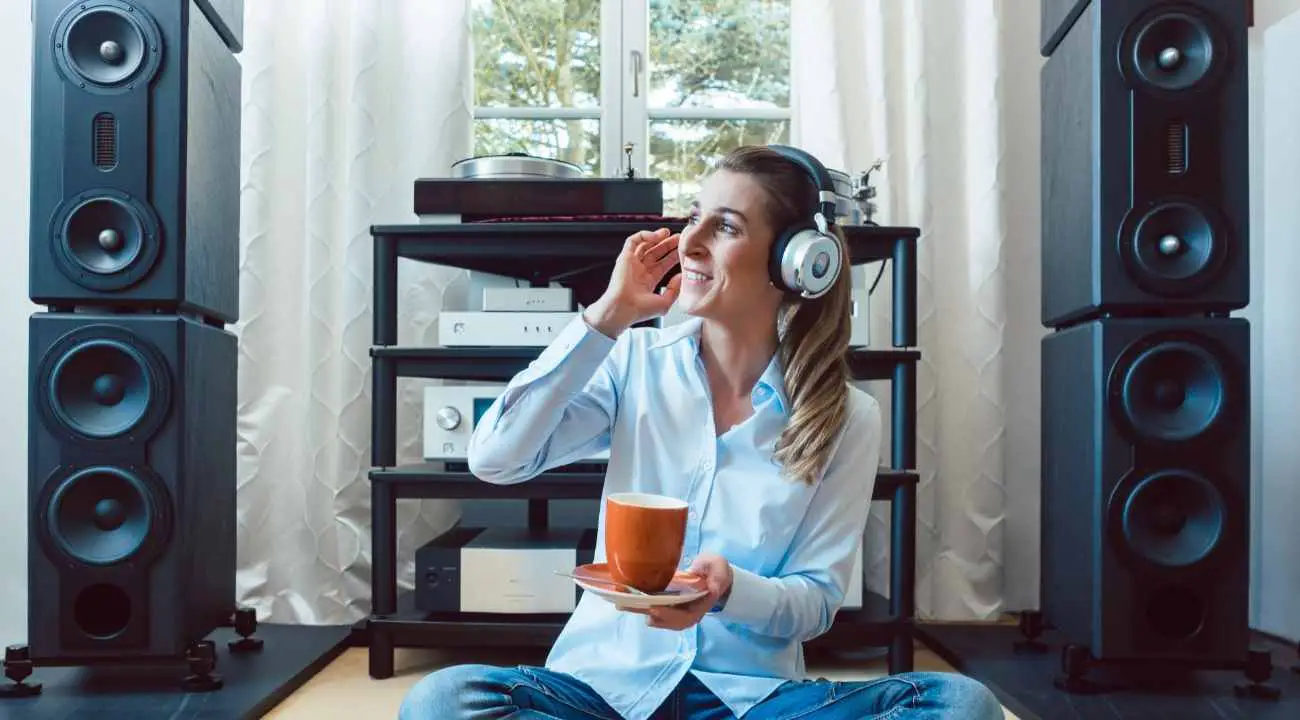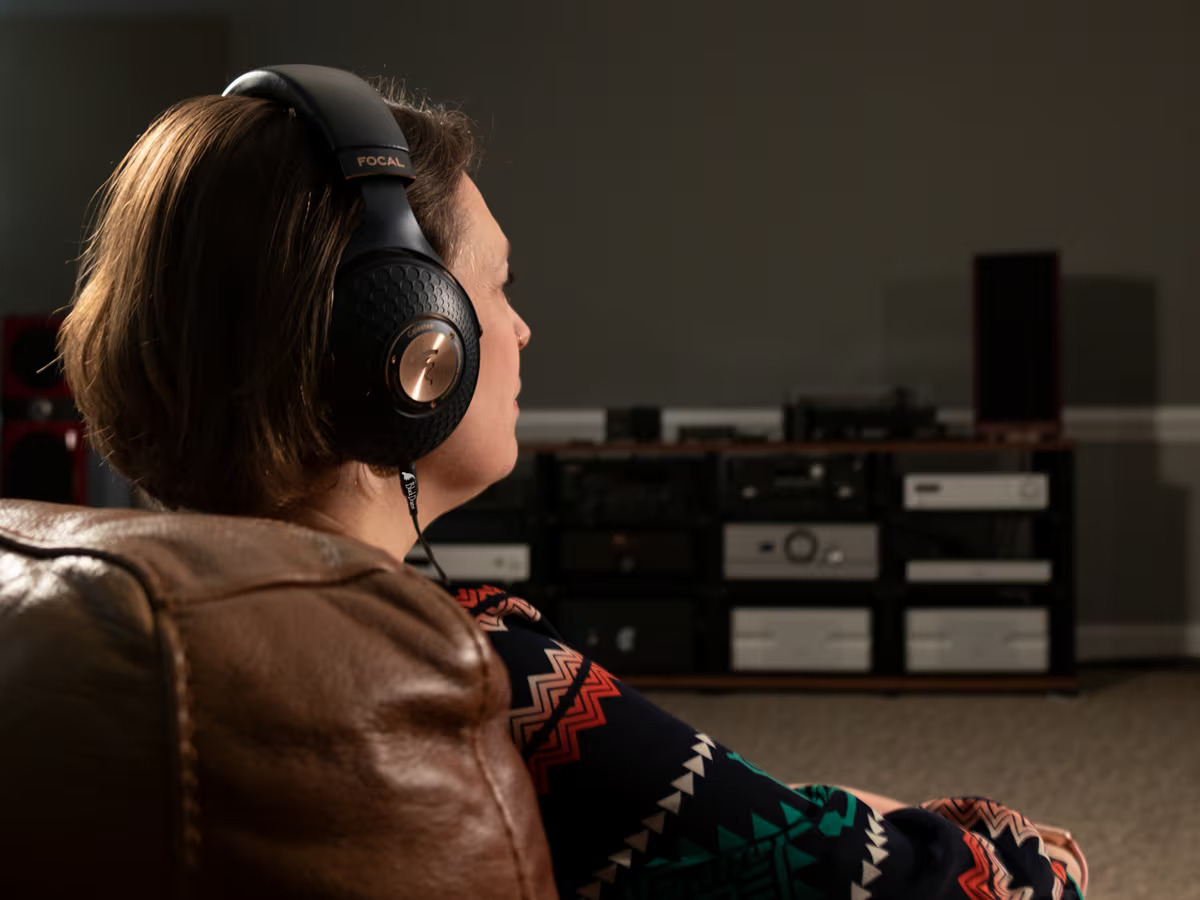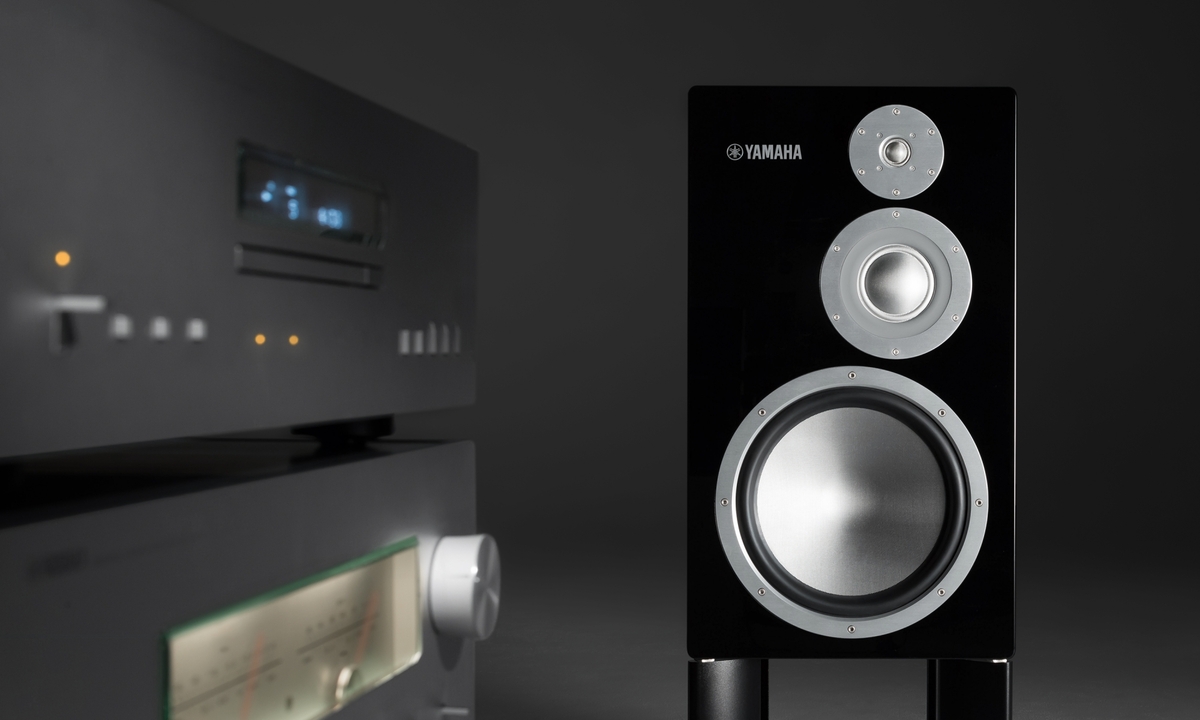Home>Production & Technology>Audiophile>How To Listen To Music Audiophile


Audiophile
How To Listen To Music Audiophile
Modified: March 10, 2024
Learn how to listen to music like an audiophile and elevate your audio experience with our expert tips and recommendations. Discover the best headphones, speakers, and audio systems for true music enthusiasts.
(Many of the links in this article redirect to a specific reviewed product. Your purchase of these products through affiliate links helps to generate commission for AudioLover.com, at no extra cost. Learn more)
Table of Contents
- Introduction
- Understanding Audiophile Music
- Choosing High-Quality Audio Formats
- Setting Up Your Audio Playback System
- Selecting the Right Speakers or Headphones
- Optimizing Your Listening Environment
- Managing Your Music Library
- Understanding and Adjusting Audio Settings
- Developing Active Listening Skills
- Exploring Music Genres for Audiophile Enjoyment
- Conclusion
Introduction
Welcome to the world of audiophiles, where music lovers strive for the ultimate listening experience. Audiophiles are passionate about the quality of sound, seeking audio systems and techniques that can reproduce music with the highest fidelity and accuracy. Whether you are a seasoned audiophile or just starting to explore the realm of high-quality audio, this article will guide you on how to listen to music like an audiophile.
Listening to music in its purest form can be a transformative and immersive experience. Audiophiles believe that every note, instrument, and nuance in a recording should be faithfully reproduced, allowing the listener to hear the music exactly as the artist intended. By paying attention to the intricacies and subtleties of a song, an audiophile can truly connect with the artistry and emotion behind it.
While audiophile-grade sound systems and equipment can be expensive, there are steps you can take to enhance your listening experience without breaking the bank. From understanding high-quality audio formats to optimizing your listening environment, we will explore various aspects of becoming an audiophile and how to integrate these practices into your music listening routine.
Whether you prefer listening through speakers or headphones, there are considerations to keep in mind when selecting the right audio equipment. Additionally, creating an optimal listening environment plays a crucial role in maximizing your enjoyment of music. We will delve into the importance of room acoustics, speaker placement, and soundproofing techniques.
Managing your music library and understanding and adjusting audio settings are essential aspects of being an audiophile. We will discuss various software programs, settings, and techniques to organize and optimize your music collection while ensuring optimum audio quality.
And finally, we will explore how developing active listening skills and expanding your musical horizons can further enrich your audiophile experience. By exploring different music genres and paying attention to the intricacies of each track, you can attain a deeper appreciation for the art of sound.
Whether you are a casual music listener looking to improve your audio setup or a dedicated audiophile seeking to take your listening experience to the next level, this article will provide valuable insights and practical tips. So, grab your headphones or settle into your favorite listening chair, and let’s embark on a journey into the world of audiophile music.
Understanding Audiophile Music
Audiophile music is not a specific genre but rather a designation given to music that has been recorded and produced with a focus on achieving the highest possible audio quality. Audiophiles seek out recordings that have been meticulously engineered to capture the subtle nuances, dynamics, and spatial characteristics of the original performance. These recordings are often done in high-resolution formats and are known for their exceptional sound reproduction.
When it comes to audiophile music, the quality of the recording is just as important as the performance itself. Audiophiles appreciate well-recorded albums that showcase the technical prowess and artistry of the musicians across various genres, including classical, jazz, rock, and electronic music.
One key aspect of audiophile music is the presence of a wide dynamic range, which refers to the difference between the quietest and loudest parts of a recording. Audiophile recordings often retain a broader dynamic range, allowing the listener to experience the full impact of the music. This dynamic range brings out the delicate nuances and the natural ebb and flow of the music.
Another hallmark of audiophile music is the attention to detail in the production and mixing process. Audiophile recordings are often engineered to create a spacious soundstage, where instruments and vocals have their specific place in the sonic landscape. This spatial accuracy gives the listener a sense of immersion, making them feel as though they are in the room with the musicians.
While audiophile music can be enjoyed through any audio system, the true essence of the recording is best experienced through high-fidelity setups. These setups typically involve high-quality speakers or headphones, amplifiers, and digital-to-analog converters (DACs) that can accurately reproduce the nuances in the music.
Additionally, high-resolution audio formats such as FLAC (Free Lossless Audio Codec) and DSD (Direct Stream Digital) are preferred by audiophiles for their ability to preserve the details and depth of the original recording. These formats capture a higher level of audio information compared to lossy formats like MP3, resulting in a more faithful reproduction of the music.
Understanding the nuances and characteristics of audiophile music is essential for appreciating the artistry and craftsmanship behind each recording. By actively seeking out well-produced albums and high-quality recordings, you can immerse yourself in a world of sonic purity and embark on a journey of musical discovery.
Choosing High-Quality Audio Formats
When it comes to enjoying audiophile music, choosing the right audio format is crucial. Different audio formats have varying levels of compression and fidelity, which can significantly impact the quality of the music playback. Let’s explore some popular high-quality audio formats favored by audiophiles:
1. FLAC (Free Lossless Audio Codec): FLAC is a widely used lossless audio format that compresses audio files without sacrificing any audio quality. It allows for bit-perfect playback, meaning the audio data is identical to the original source. FLAC files provide excellent sound quality and are compatible with most audio players and devices.
2. DSD (Direct Stream Digital): DSD is a high-resolution audio format known for its ability to capture sound with incredible detail and accuracy. It uses a different encoding method compared to traditional PCM formats and has a sampling rate higher than CD-quality audio. DSD files are favored by audiophiles for their ability to reproduce the natural dynamics and nuances of live performances.
3. WAV (Waveform Audio File Format): WAV is a lossless, uncompressed audio format that is widely supported across devices and platforms. It offers excellent audio quality and is commonly used for professional audio production. However, WAV files tend to be larger in size compared to other formats, requiring more storage space.
4. AIFF (Audio Interchange File Format): AIFF is another uncompressed audio format, similar to WAV. It is commonly used in Apple’s ecosystem and is known for its high-quality sound reproduction. AIFF files are larger in size but offer the advantage of preserving audio data without any compression.
5. ALAC (Apple Lossless Audio Codec): ALAC is Apple’s proprietary lossless audio format, designed to provide high-quality audio while retaining smaller file sizes compared to uncompressed formats. ALAC files are compatible with Apple devices and can be easily synced with iTunes and other Apple software.
It’s important to note that these high-quality audio formats require ample storage space due to their larger file sizes compared to compressed formats like MP3. Therefore, consider the available storage capacity on your device and select the format accordingly.
In addition to the audio format, the quality of the original recording and mastering also plays a significant role in the overall audio experience. Look for albums that have been well-recorded and mastered to fully take advantage of the capabilities of these high-quality audio formats.
By choosing high-quality audio formats, you can ensure that your music collection is a true reflection of the artist’s intent, with every detail preserved and faithfully reproduced.
Setting Up Your Audio Playback System
When it comes to enjoying audiophile music, the quality of your audio playback system is of utmost importance. Here are some key considerations for setting up your system to achieve optimal sound quality:
1. Source Components: Start with a high-quality source component, such as a CD player, turntable, or digital music player. Invest in a source that has excellent digital-to-analog conversion capabilities to ensure accurate audio reproduction.
2. Amplifier and Preamp: A good amplifier and preamp are essential for driving your speakers or headphones. Look for amplifiers that have a clean power delivery and low distortion. Consider a preamp with tone control options to fine-tune the sound to your preference.
3. Speakers or Headphones: Choose speakers or headphones that are known for their accurate sound reproduction. Consider factors such as frequency response, sensitivity, and impedance when making your selection. Bookshelf or floor-standing speakers can provide a more immersive experience, while high-quality headphones offer an intimate and detailed listening experience.
4. Speaker Placement: Proper placement of speakers can greatly impact the sound quality. Position them away from walls and corners to minimize reflections and optimize the soundstage. Experiment with placement to achieve the best balance of imaging and tonal accuracy.
5. Room Acoustics: Consider the acoustic properties of your listening space. Add acoustic treatment such as diffusers, absorbers, and bass traps to minimize unwanted echoes and standing waves. This will improve the clarity and accuracy of the sound reproduction.
6. Cables and Interconnects: Select high-quality cables and interconnects to ensure a clean and uninterrupted signal flow. Look for cables with good shielding and low signal loss to maintain the integrity of the audio signal.
7. Power Conditioning: Power fluctuations and electrical noise can impact the performance of your audio system. Consider investing in a power conditioner or surge protector that filters out noise and provides a clean power supply to your equipment.
8. Digital-to-Analog Converter (DAC): If you’re playing digital music, using an external DAC can significantly improve the audio quality. Look for a DAC that supports high-resolution audio formats and has a high-quality digital-to-analog conversion chip.
9. Room Calibration: Consider using room calibration software or hardware to fine-tune the sound output based on the characteristics of your listening environment. These tools analyze the acoustics of your room and make adjustments to optimize the audio performance.
By carefully setting up your audio playback system, you can create a listening experience that brings out the full potential of your audiophile music collection. Keep in mind that system components, such as speakers and amplifiers, should complement each other to achieve a cohesive and balanced sound reproduction. Experimentation and fine-tuning may be necessary to find the perfect combination that suits your listening preferences and environment.
Selecting the Right Speakers or Headphones
Choosing the right speakers or headphones is crucial for experiencing high-quality audiophile sound. The right audio gear can make a significant difference in how you perceive and enjoy your favorite music. Here are some factors to consider when selecting speakers or headphones for your audiophile setup:
1. Sound Quality: Look for speakers or headphones that prioritize accurate sound reproduction. They should provide a balanced frequency response, allowing you to hear the full range of audio frequencies without any significant emphasis on certain frequencies. This ensures that the original recording is faithfully reproduced.
2. Transducer Type: Speakers can utilize various types of transducers, such as dynamic drivers, planar magnetic drivers, or electrostatic drivers. Each has its own sonic characteristics. Headphones can use dynamic drivers, balanced armature drivers, or planar magnetic drivers. Consider the pros and cons of each type and choose the one that aligns with your preferences.
3. Sensitivity: Speaker sensitivity refers to how loud they can get with a given amount of power. Higher sensitivity means that the speakers can produce louder sound using less power. For headphones, sensitivity indicates how efficiently they convert electrical signals into sound. Consider your listening environment and the power output of your amplifier when choosing speakers or headphones with the appropriate sensitivity.
4. Impedance: Impedance is a measure of the resistance an audio device presents to the electrical signal. It affects how effectively an amplifier can drive the speakers or headphones. Match the impedance of your speakers or headphones with the output impedance of your amplifier for optimal performance.
5. Open-Back vs. Closed-Back: When it comes to headphones, consider whether you prefer open-back or closed-back designs. Open-back headphones provide a more spacious and natural soundstage but allow sound to leak in and out. Closed-back headphones offer better noise isolation but may have a more confined soundstage.
6. Comfort: For headphones, consider the comfort factor, especially if you plan on extended listening sessions. Look for ergonomic designs, adjustable headbands, and comfortable ear cushions. With speakers, consider the size and weight, as well as the available placement options in your listening space.
7. Budget: Set a budget for speakers or headphones that aligns with your requirements and preferences. Remember, higher-priced options often offer better build quality, sound quality, and durability. However, there are excellent options available at various price points, so do research and read reviews to find the best value for your budget.
8. Personal Listening Preferences: Consider your personal listening preferences, such as the type of music you enjoy and the sound signature you prefer. Some speakers or headphones may emphasize certain aspects of the audio, like bass or treble, to cater to specific genres or listening preferences. Choose accordingly to match your preferred sonic experience.
Remember to audition speakers or headphones whenever possible to get a firsthand experience of their sound quality and compatibility with your audio setup. Trust your ears and choose what sounds best to you. By selecting the right speakers or headphones, you can elevate your listening experience and immerse yourself in the intricate details and nuances of your favorite audiophile music.
Optimizing Your Listening Environment
Creating an optimal listening environment is crucial for experiencing the full potential of your audiophile music. The way sound interacts with your surroundings can greatly impact the fidelity and accuracy of the audio playback. Here are some tips to optimize your listening environment:
1. Room Acoustics: Consider the acoustic properties of your listening space. The room size, shape, and construction materials can affect how sound waves propagate and interact with surfaces. Add acoustic treatment such as diffusers, absorbers, and bass traps to minimize unwanted echoes, standing waves, and reflections. This will improve the clarity and accuracy of the sound reproduction.
2. Speaker Placement: Proper speaker placement is essential for achieving optimal sound imaging and tonal balance. Place the speakers away from walls and corners to minimize boundary interactions. Follow the “equilateral triangle” rule by positioning the speakers and your listening position in an equilateral triangle formation. Experiment with different placements to find the best positioning for your room and listening preferences.
3. Speaker Positioning: Pay attention to the distance and angle of the speakers. Position them at ear level, aiming directly towards your listening position. This ensures that the sound from each speaker arrives at your ears simultaneously, creating a focused and accurate soundstage.
4. Listener Positioning: Find the optimal listening position within your room. This sweet spot should be centered between the speakers and at an appropriate distance, taking into account the room’s dimensions and speaker characteristics. Sit in a position that provides a balanced and immersive sound experience.
5. Soundproofing: If external noise is a concern or if you live in a shared space, consider soundproofing your listening room. Use materials such as foam panels, mass-loaded vinyl, or double-glazed windows to minimize noise leakage and outside distractions that can negatively impact your listening experience.
6. Cable Management: Proper cable management not only keeps your setup organized but also minimizes interference and signal loss. Keep speaker cables, power cords, and audio interconnects away from sources of electromagnetic interference (EMI) such as power cables, Wi-Fi routers, and electrical appliances.
7. Optimize Power Quality: Clean, stable power is essential for optimal audio performance. Consider using dedicated power outlets for audio equipment and invest in a high-quality power conditioner or surge protector. These devices filter out noise and provide a cleaner and more reliable power supply to your audio gear.
8. Control Room Reflections: Pay attention to any reflective surfaces in your listening room, such as glass windows or large flat walls. Consider adding curtains, drapes, or acoustic panels to minimize reflections and create a more controlled listening environment.
By optimizing your listening environment, you can minimize acoustic distortions, improve sound localization, and enhance the overall clarity and accuracy of the audio playback. Each room and setup is unique, so take the time to experiment and fine-tune the acoustics based on your specific space and equipment. The goal is to create a space that allows you to fully immerse yourself in the music and appreciate the nuances and details of your audiophile recordings.
Managing Your Music Library
As an audiophile, managing your music library is essential for keeping your collection organized and easily accessible. A well-organized library allows for seamless navigation and ensures that your audiophile music is readily available for your listening pleasure. Here are some tips for effectively managing your music library:
1. Organize by Metadata: Ensure that your music files have accurate and consistent metadata. Metadata includes information such as artist name, album title, track number, and genre. Use music management software or media players to automatically update and organize your files based on this metadata.
2. File Naming Convention: Adopt a consistent file naming convention to keep your music files organized. Include relevant information such as artist name, album title, and track number. This ensures that your files are easy to locate and navigate, both within your music library and on external devices.
3. Create Folders or Playlists: Create folders or playlists based on different genres, artists, or moods. This allows for easy categorization and quick access to specific types of music or curated playlists.
4. Backup Your Library: Regularly backup your music library to prevent data loss. Use external hard drives, cloud storage, or dedicated backup software to ensure that your precious audiophile music is protected.
5. Tagging: Consider using tags to add additional information to your music files. Tags can include details like composer, year of release, or even specific musical attributes like tempo or mood. This can make searching and sorting your music library more precise and flexible.
6. Album Artwork: Add album artwork to your music files to enhance the visual experience when browsing through your library. Many music management software can automatically download album artwork for your collection.
7. Remove Duplicates: Periodically scan your music library for duplicate files and remove them to free up space and avoid redundancy. Music management software often has built-in tools to help identify duplicates.
8. Explore Streaming Services: Consider using music streaming services that offer high-quality audio to supplement your local music library. This can provide access to a vast library of audiophile-grade recordings without the need for extensive local storage.
9. Metadata Editing: If you notice any incorrect or missing metadata in your music files, take the time to manually edit and correct them. Accuracy in metadata ensures that your music library remains organized and easy to navigate.
10. Stay Updated: Keep your music library up to date by adding new releases and removing outdated or unwanted files. Regularly update your library to maintain a streamlined and relevant collection.
By implementing effective management practices, you can ensure that your audiophile music library is well-organized, easily navigable, and ready to provide you with a seamless and enjoyable listening experience. Take the time to establish a system that works for you and invest in music management software or apps that align with your needs and preferences.
Understanding and Adjusting Audio Settings
Understanding and adjusting audio settings is crucial for fine-tuning your audiophile listening experience. By adjusting various settings, you can optimize the sound output according to your preferences and the characteristics of your audio system. Here are some key aspects to consider when it comes to audio settings:
1. Equalization (EQ): EQ allows you to adjust the balance of frequencies in your audio playback. It can be used to boost or cut specific frequency ranges, such as bass, midrange, or treble. Experiment with EQ settings to tailor the sound to your liking and compensate for any system or room imbalances. However, be careful not to overdo it, as excessive EQ adjustments can introduce distortion and compromise the original recording.
2. Audio Enhancements: Many audio systems and software come with built-in audio enhancement features like virtual surround, spatial audio, or soundstage expansion. These settings can create a more immersive listening experience, but their effectiveness may vary depending on the quality of your audio equipment and personal preference. Experiment with these enhancements to determine what enhances your listening experience without sacrificing audio accuracy.
3. Bit Depth and Sample Rate: Adjusting the bit depth and sample rate can impact the audio quality when playing high-resolution music. Higher bit depths (such as 24-bit) and sample rates (such as 96 kHz or higher) can reproduce more detailed audio nuances. However, keep in mind that your system and audio files must support these higher resolutions for a noticeable difference in sound quality.
4. Playback Modes: Some audio systems offer different playback modes, such as stereo, mono, or surround sound. Choose the appropriate playback mode based on the audio content you are listening to. Stereo is the standard for most music, while surround sound is ideal for movies and gaming.
5. Volume Levels: Adjust the volume levels according to your listening environment and personal preference. Be mindful of not listening at excessively high volumes for prolonged periods to protect your hearing and avoid distortion.
6. Upsampling and Sample Rate Conversion: Some audio systems offer options for upsampling or sample rate conversion. Upsampling involves increasing the sample rate of audio files, while sample rate conversion converts audio files to a different sample rate. These settings can affect the audio quality and introduce subtle changes in sound, so experiment with these settings to find the balance that provides the desired listening experience.
7. Crossfade: Crossfade allows for smooth transitions between tracks by overlapping the end of one track with the beginning of another. This eliminates gaps between songs and provides a continuous listening experience. Adjust the crossfade duration to your preference.
8. Dynamic Range Compression: Dynamic range compression is used to reduce the disparity between the loudest and softest parts of an audio track. It can be useful for listening to music in environments where there is excessive background noise. However, be cautious as excessive compression can reduce the natural dynamics and impact the overall listening experience.
9. Audio Output Formats and Codecs: Pay attention to the audio output formats and codecs supported by your audio system or devices. Ensure that they are compatible with the audio files you intend to listen to for optimal sound quality.
By understanding and adjusting these audio settings, you can fine-tune your audiophile listening experience and tailor it to your preferences and listening environment. Take the time to experiment with different settings and trust your ears to find the optimal balance that enhances your enjoyment of music while maintaining the integrity of the original recordings.
Developing Active Listening Skills
Developing active listening skills is vital for fully immersing yourself in the world of audiophile music. Active listening goes beyond simply hearing the sound but rather involves consciously engaging with the music and focusing on the intricacies and details of each track. Here are some tips to help you develop active listening skills:
1. Eliminate Distractions: Find a quiet and comfortable space where you can focus solely on the music without any distractions. Minimize background noise and turn off any notifications or devices that may disrupt your concentration.
2. Concentrate on Details: Pay attention to the subtle details in the music, such as instrument placement, ambience, and spatial effects. Listen for nuances in the vocals, dynamics, and instrument timbres. Engage your senses and delve into the textures and layers of the music.
3. Focus on Individual Instruments: Train your ears to isolate and focus on individual instruments within a recording. Follow the melody lines, pay attention to the way instruments harmonize, and appreciate the unique qualities of each instrument’s sound.
4. Analyze the Soundstage: Imagine the soundstage unfolding before you. Visualize the placement of instruments and vocalists within the recording space. Feel the depth and width of the soundstage as the music envelops you.
5. Listen to Different Genres: Expand your musical horizons by exploring various genres. Each genre has its own unique characteristics and production styles. By listening to a diverse range of music, you broaden your appreciation and understanding of different soundscapes.
6. Read Lyrics and Liner Notes: When listening to songs with lyrics, take the time to read the lyrics and liner notes. Understanding the context and meaning behind the lyrics can enhance your emotional connection to the music.
7. Attend Live Performances: Whenever possible, experience live performances to witness the magic of musicians performing in real time. Live performances offer a different energy and sense of immediacy that can deepen your appreciation for the music.
8. Take Breaks: Give your ears and mind regular breaks during intense listening sessions. This allows time for your senses to rest and helps maintain focus and concentration.
9. Discuss and Share: Engage in discussions with fellow audiophiles or music enthusiasts to exchange ideas, interpretations, and recommendations. Sharing your passion for music with others can deepen your understanding and open you up to new perspectives.
10. Reflect and Journal: Take the time to reflect on your listening experiences and jot down your thoughts and observations. Keeping a journal of your musical journey can help track your progress and add a personal touch to your audiophile experience.
Developing active listening skills is a gradual process that requires patience and practice. As you train your ears and immerse yourself in the intricacies of audiophile music, you will uncover hidden details and nuances that enhance your enjoyment and appreciation of the art. Embrace the journey and let your ears guide you to a deeper level of musical discovery and connection.
Exploring Music Genres for Audiophile Enjoyment
Exploring different music genres is an exciting way to expand your audiophile horizons and discover new sonic landscapes. Each genre offers its own unique characteristics, production styles, and artistic expressions. Here are a few genres that are particularly captivating for audiophile enjoyment:
1. Classical Music: Classical music is renowned for its intricate compositions, rich dynamics, and detailed orchestration. The genre often showcases the capabilities of high-fidelity audio systems, allowing you to appreciate the nuances of each instrument and the grandeur of large-scale orchestras. Listen to works by composers like Bach, Mozart, Beethoven, and Mahler to experience the profound beauty and emotional depth of classical music.
2. Jazz: Jazz is a genre known for its improvisation, complex harmonies, and expressive performances. From the smoky tones of a saxophone to the intricate interplay of a jazz ensemble, jazz music offers a variety of textures and dynamics that audiophiles can savor. Dive into the worlds of legendary artists like Miles Davis, John Coltrane, Ella Fitzgerald, and Thelonious Monk for a captivating sonic journey.
3. Blues: The blues genre is characterized by soulful melodies, expressive vocals, and subtle nuances. Blues recordings often showcase raw and intimate performances, allowing every emotion to be felt in the music. Listen to blues legends like B.B. King, Robert Johnson, Etta James, and Muddy Waters to immerse yourself in the heartfelt sounds of this influential genre.
4. Rock: Rock music offers a wide range of sonic experiences, from the heavy riffs of classic and hard rock to the intricate guitar work of progressive rock. Explore the discographies of bands like Led Zeppelin, Pink Floyd, Queen, and Radiohead to discover the power, energy, and sonic creativity that rock music has to offer.
5. Electronic: Electronic music encompasses a vast range of styles, from ambient to dance-oriented genres. The genre often utilizes intricate soundscapes, rich layers of synthesis, and rhythmic beats to create immersive sonic experiences. Artists such as Aphex Twin, Daft Punk, Boards of Canada, and Kraftwerk push the boundaries of sound and technology, offering audiophiles a captivating sonic adventure.
6. Folk and Acoustic: Folk and acoustic genres emphasize simplicity, authenticity, and storytelling. The delicate strumming of an acoustic guitar, heartfelt lyrics, and emotive vocals immerse listeners in genuine and intimate musical experiences. Dive into the works of artists like Bob Dylan, Joni Mitchell, Nick Drake, and Damien Rice for a serene and captivating audiophile journey.
7. World Music: World music encompasses a vast array of cultural sounds, reflecting the diverse musical traditions from around the globe. Explore the enchanting rhythms of African drums, the intricate melodies of Indian ragas, or the passionate harmonies of Latin American music. Rediscover the beauty and diversity of world music with artists such as Fela Kuti, Ali Farka Touré, Ravi Shankar, and Buena Vista Social Club.
These are just a few examples of the many genres waiting to be explored by the audiophile enthusiast. Immerse yourself in different genres, follow the recommendations of fellow music lovers, and let your ears guide you on a captivating journey of sonic discovery. Embrace the diversity of music and the different ways it can evoke emotions, challenge perceptions, and transport you to new realms of auditory bliss.
Conclusion
Congratulations! You have embarked on a journey into the world of audiophile music, where the pursuit of high-quality sound allows you to experience music in its purest form. By understanding audiophile music, selecting the right audio formats, setting up your audio playback system, and optimizing your listening environment, you are well on your way to enhancing your music listening experience.
Throughout this article, we’ve explored the importance of choosing high-quality audio formats like FLAC and DSD, selecting the right speakers or headphones for accurate sound reproduction, and optimizing your listening environment through room acoustics and proper equipment placement. We’ve discussed the significance of managing your music library, understanding and adjusting audio settings to your preference, and developing active listening skills to fully immerse yourself in the music.
Remember, audiophile enjoyment is not limited to any specific genre. We’ve touched on various genres such as classical, jazz, rock, blues, electronic, folk, and world music, each offering its own captivating sonic landscape and artistic expression. By exploring different genres, you can broaden your musical horizons and appreciate the diversity and depth of audiophile music.
As you continue on your audiophile journey, remember to trust your ears, experiment with different settings and music genres, and engage with fellow music enthusiasts to exchange ideas and recommendations. The joy of audiophile music lies in the process of discovery, where you can uncover hidden details, connect with the artistry behind the music, and lose yourself in a world of pristine sound.
So, continue to refine and optimize your audio setup, seek out well-recorded albums, and let the music take you on a captivating sonic adventure. Whether you are relaxing in your favorite listening space or enjoying music on the go, embrace the beauty and power of sound, and let audiophile music be your guide to an extraordinary music listening experience.











